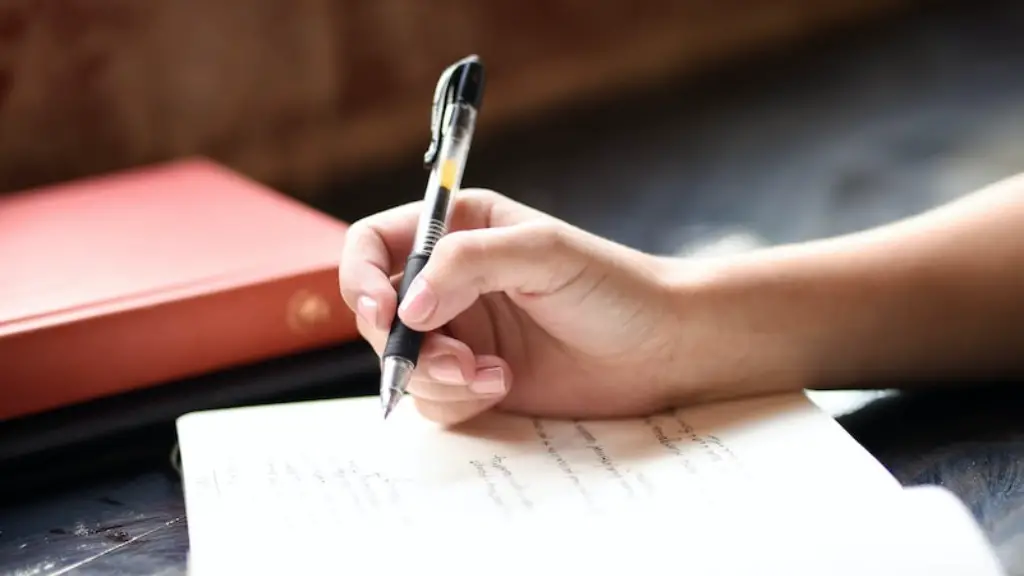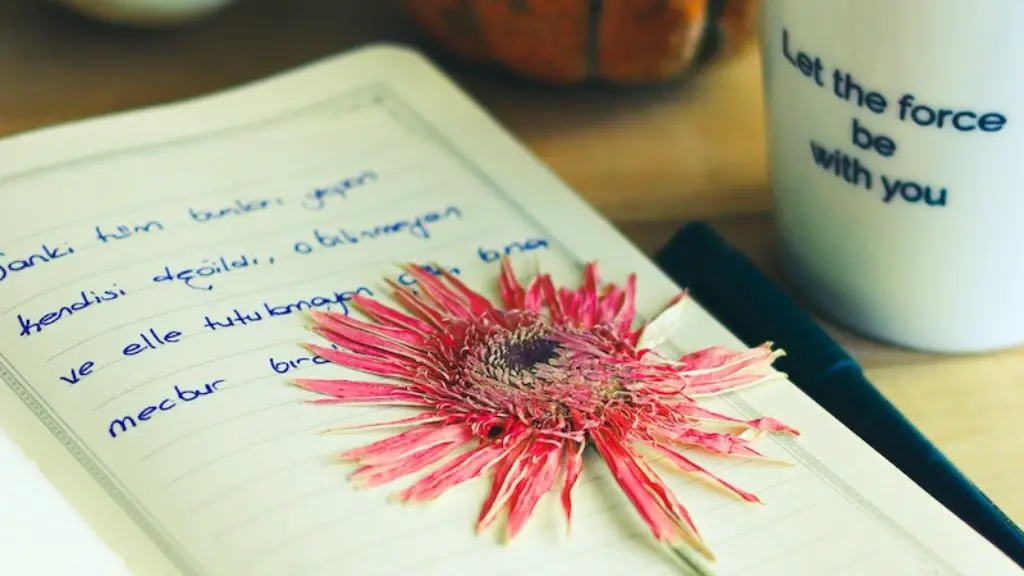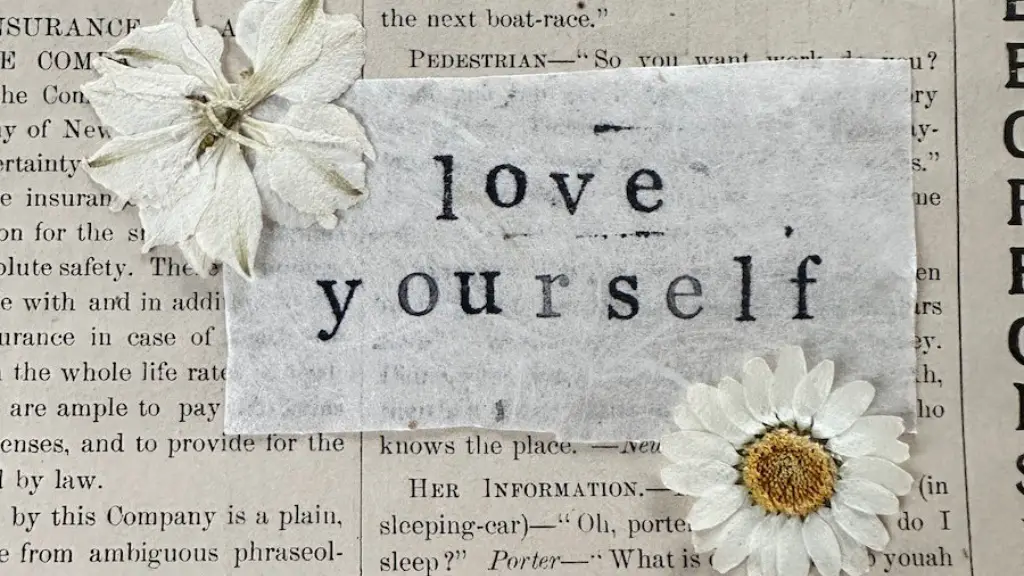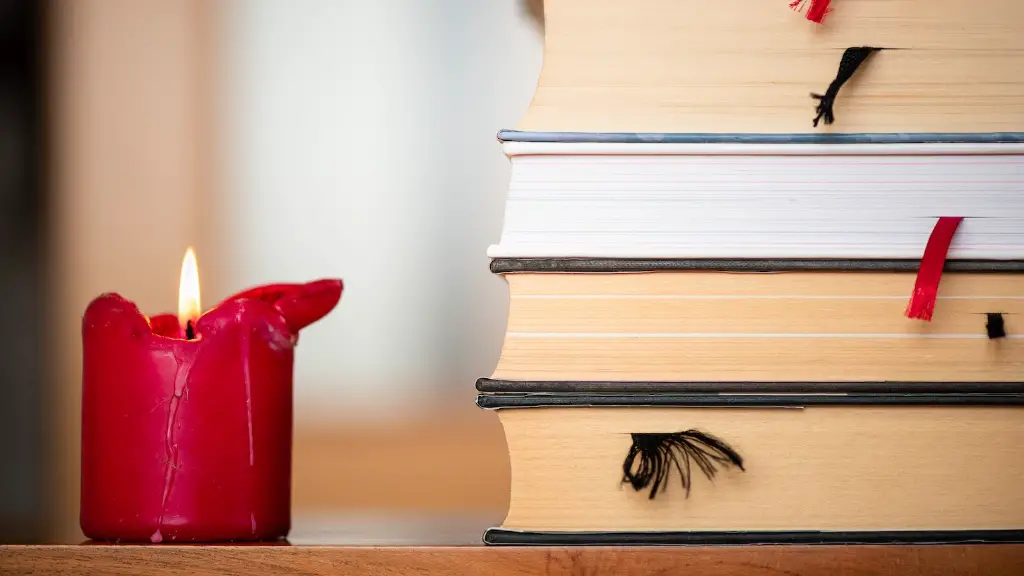Rhyme and Meter
Poetry requires a certain structure to make it flow and sound pleasing. Rhyme and meter are two of the most important elements that comprise structure in poetry. Rhyme refers to the repetition of words with similar sounds at the end of a line or poem. Meter is a way of arranging certain syllables in a line of poetry in such a way that it has a rhythm or beat. A rhythmic pattern called a “foot” is often used to measure syllables in a line.
Rhyme and meter are not required for all types of poetry, but they can help to make a poem flow more smoothly. To create a sense of flow, try to arrange words and syllables in a way that will feel comfortable to read or recite. If a poem has a particular meter, recite it aloud to feel the rhythm of the poem. Reading a poem aloud can help to identify any areas where the poem doesn’t flow or may need to be reworked.
Word Choice
The right words and phrases can create a strong flow in a poem. Avoid using words and phrases that are too common in order to keep the poem interesting. Instead, strive to use more unique words and phrases, as they will give the poem a more natural flow. Additionally, it’s important to choose words that evoke emotion in the reader or listener. Try to pick words that give off a certain feeling or convey a certain message.
Using imagery and metaphors can help to create a strong flow in a poem, as it can give the poem a deeper level of meaning. Choose words that carry a strong visual or auditory connotation and will help the reader to visualize the poem and fee connected to it.
Structure
The structure of a poem also plays an important role in creating a smooth flow. Poems are typically structured in stanzas that consist of two lines or multiple lines. Including a variety of stanzas with different lengths can help to make the poem sound more natural and create a sense of continuity.
Additionally, a poem should also have a beginning, middle, and end. Incorporating a story-like element into the poem is another way to create a sense of flow. Starting off with an introduction to the main topic and then introducing a problem or conflict can help to create a smooth and continuous transition from start to finish.
Line Breaks
Line breaks are essential for a poem to have a fluid flow. Deciding where to insert line breaks will depend on the type of poem and the type of flow that the poet wishes to achieve. Keep in mind that shorter lines will create a more rapid flow, while longer lines tend to create a slower and calmer flow.
Additionally, line breaks can be used to create a pause in the poem and add in a certain tone. Using a stanza break can create an extended pause and give the poem a more dramatic effect.
Punctuation
Punctuation is another key element of a poem as it can create a sense of rhythm and make the poem sound more musical. Look for words or phrases that can be repeated to create a certain sound or tone.
Using enjambment is another way to create a sense of flow in a poem. Enjambment is when a phrase or sentence is carried from one line to the next. This technique creates continuity and a sense of motion in the poem.
Reworking
Reworking is an important part of the writing process. Once a poem is written, it’s important to go back and make edits in order to make the poem flow better. Take out any unnecessary words or phrases and look for ways to change the structure to make the poem sound more natural. Additionally, adding an element of surprise or changing the word order can help to create a more interesting poem.
Writing to Music
Writing to music is a great way to get into a creative mindset and make the words flow. Music can help to evoke emotion, create imagery, and stimulate creativity. Writing to instrumental music can be particularly helpful in achieving a peaceful, flowing rhythm in the poem.
Varying Word Length
Varying word length is one of the easiest ways to make a poem flow. Including short words alongside longer ones can give a poem a more balanced and interesting flow. Additionally, choosing words with different numbers of syllables can help to create a certain rhythm and tone.
Experimentation
Experimentation is key when it comes to writing a poem that flows. Don’t be afraid to make changes to the structure or wording if it helps to create a smoother flow. Additionally, embracing creativity and taking risks can help to create a poetic flow.
Exploring Different Forms
Different forms of poetry can provide a more natural flow. Exploring traditional poetry forms such as sonnets, villanelles, haikus, and free verse can help to unlock new levels of creativity.
Taking Time
Creating a poem that flows can take time and patience. Taking a break and coming back to it with a fresh perspective can help to see the poem in a new light. Additionally, reading the poem aloud and asking for feedback from others can also be helpful in improving the flow of a poem.
Expressing Emotion Through Poetry
Expressing emotion through poetry can be a powerful tool for creating a smooth and powerful flow. Poetry can be a great way to connect with readers and help to evoke strong feelings. Drawing on personal experiences or feelings can help to make the poem more real and add in a unique level of understanding.
Using Alliteration
Alliteration is the repetition of words that begin with the same sound. Using alliteration can help to create a more natural flow and give the poem a more interesting sound. Alliteration can add an extra layer of meaning and add in a unique level of creativity.
Formatting the Poem
Formatting the poem is an important step for making the poem flow better. Setting the poem into stanzas or maintaining a consistent line length can help to create a smoother flow. Additionally, leaving enough white space between the lines of the poem can help to give the reader enough time to process each line and make the poem more enjoyable to read.
Creating Visuals
Creating visuals to accompany the poem can help readers to understand the message of the poem. Using visuals such as photographs, illustrations, or videos can help to give the poem an extra level of dimension and make it easier to connect with the poem. Visuals also help to create a smoother flow to the poem as it can take the poem in a different direction and add in a unique atmosphere.



